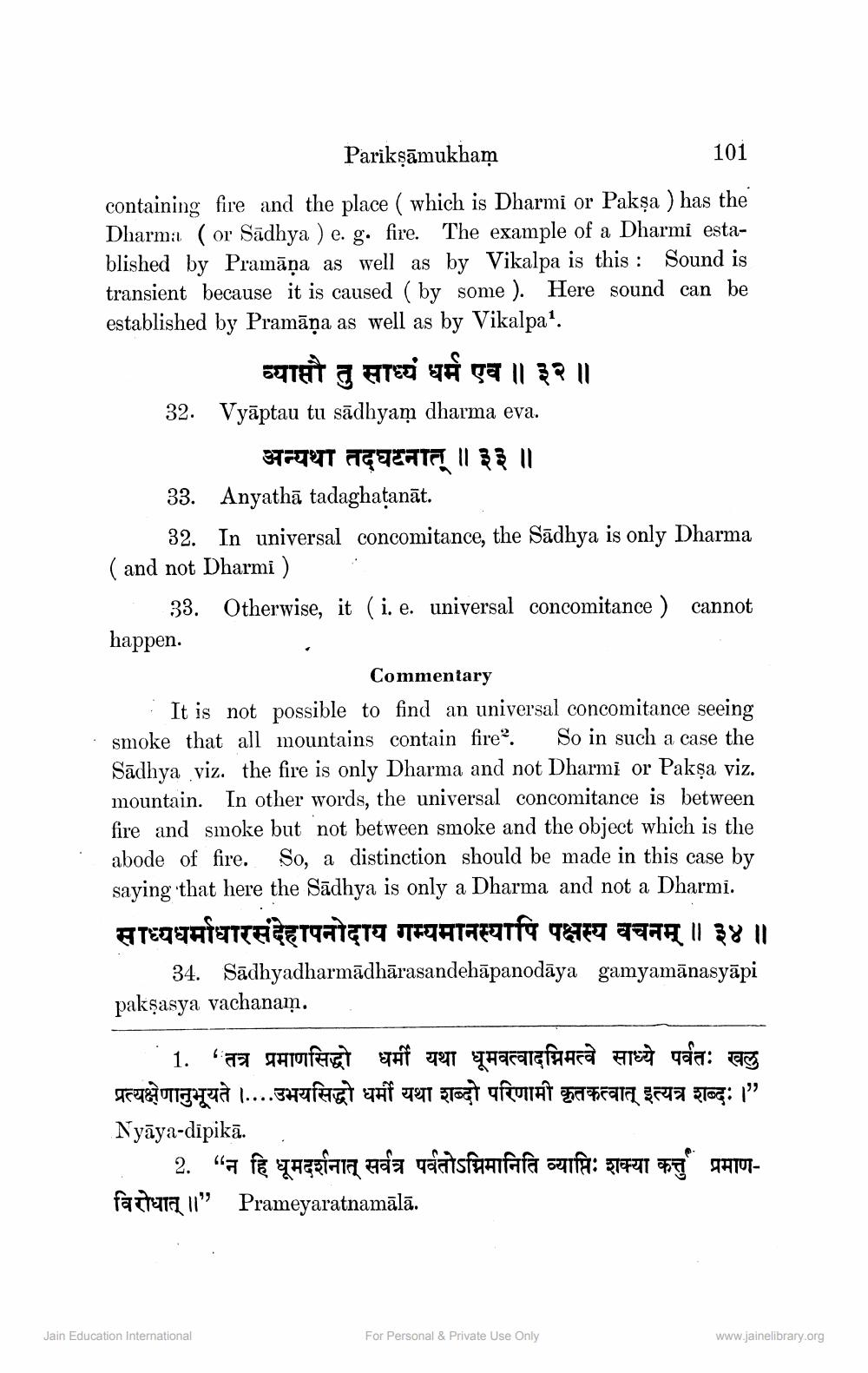________________
Parikşāmukham
101 containing fire and the place ( which is Dharmi or Pakşa ) has the Dharmit (or Sadhya ) e. g. fire. The example of a Dharmi established by Pramāņa as well as by Vikalpa is this : Sound is transient because it is caused ( by some ). Here sound can be established by Pramāņa as well as by Vikalpa'.
व्याप्तौ तु साध्यं धर्म एव ॥ ३२॥ 32. Vyāptau tu sādhyam dharma eva.
37FCUT ACETATET 1133 111 33. Anyathā tadaghatanāt.
32. In universal concomitance, the Sādhya is only Dharma ( and not Dharmi )
33. Otherwise, it ( i. e. universal concomitance ) cannot happen.
Commentary It is not possible to find an universal concomitance seeing · smoke that all mountains contain fire?. So in such a case the
Sādhya viz. the fire is only Dharma and not Dharmi or Paksa viz. mountain. In other words, the universal concomitance is between fire and smoke but not between smoke and the object which is the abode of fire. So, a distinction should be made in this case by saying that here the Sādhya is only a Dharma and not a Dharmi. साध्यधर्माधारसंदेहापनोदाय गम्यमानस्यापि पक्षस्य वचनम् ॥ ३४ ॥
34. Sādhyadharmādhārasandehāpanodāya gamyamānasyāpi pakşasya vachanam.
___ 1. 'तत्र प्रमाणसिद्धो धर्मी यथा धूमवत्वादग्निमत्वे साध्ये पर्वतः खलु प्रत्यक्षेणानुभूयते ।....उभयसिद्धो धर्मी यथा शब्दो परिणामी कृतकत्वात् इत्यत्र शब्दः ।" Nyāya-dipikā.
2. "न हि धूमदर्शनात् सर्वत्र पर्वतोऽग्निमानिति व्याप्तिः शक्या कत्तु प्रमाणfattata l." Prameyaratnamālā.
Jain Education International
For Personal & Private Use Only
www.jainelibrary.org




